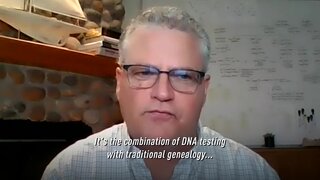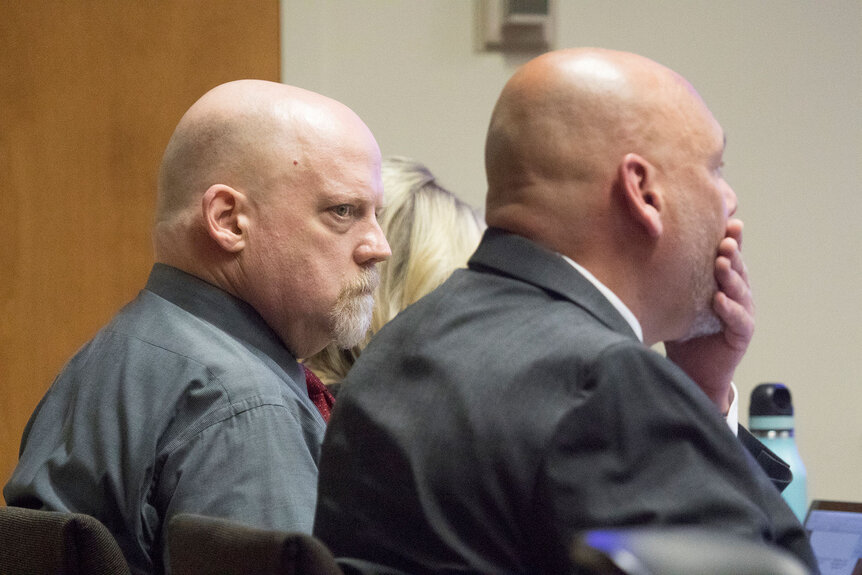Create a free profile to get unlimited access to exclusive videos, breaking news, sweepstakes, and more!
First Man Convicted Of Murder On Genetic Genealogy Evidence Has Verdict Overturned
William Earl Talbott II was convicted of brutally murdering a Canadian couple in 1987 in a case that marked a pivotal point in the use of genetic genealogy to solve cold cases. His conviction was overturned on appeal because of jury bias.

The first man to be found guilty of murder after being linked to a crime via genetic genealogy has had his two convictions overturned.
William Earl Talbott II was convicted of killing 20-year-old Jay Cook and 18-year-old Tanya Van Cuylenborg in 1987 while the Canadian high school sweethearts visited Seattle, as previously reported. Talbott’s 2018 arrest helped set the bar for genetic genealogy, a science that has since boomed and redefined criminal investigations around the world, according to a report by CBS' "60 Minutes."
On Monday, a Washington State Appeals Court overturned both of Talbott’s first-degree murder convictions on the grounds of juror bias, according to court records. At the start of jury selection for the original trial, a juror was picked for further questioning when she expressed she might be partial to the evidence potentially presented at trial. The woman, who was not named, cited past traumatic experiences and her role as a new mother for reasons that she could not be objective.
The defendant’s motion to remove the juror from the panel was initially denied.
But in his latest appeal, Talbott argued that his constitutional right to an impartial jury was violated.
The court of appeals ruled in his favor.
“After [the juror’s] clear, repeated expressions of actual bias as to the precise nature of the allegations at the heart of this trial and evidence which would be introduced, we cannot conclude that juror [number] 40 was sufficiently rehabilitated such that Talbott was provided a fair and impartial jury.”
The court’s ruling included transcripts from portions of voir dire, where the juror referenced growing up in a violent household.
“I don’t know how I would feel, being shown evidence of something that could bring up memories that I have worked to get rid of,” said the juror. “I also have a daughter, and I think that might also play a part in how I might feel. If there was some action taken towards a young woman, I might take that personally and not be able to be impartial.”
Jurors heard the violent and gruesome details behind the murders for which Talbott was accused.
According to court records, Cook and Cuylenborg left Victoria, British Columbia, on Nov. 18, 1987, to retrieve furnace parts in Seattle for Cook’s father. On Nov. 24, Cuylenborg’s body was discovered on a steep embankment in a rural area of Skagit County. Her pants were removed, and her bra pulled above her breasts. Someone beat her and shot her in the back of the head at close range.
The following day, the couple’s van was found with blood evidence and Cuylenborg’s missing pants inside.
On Nov. 26, 1987, Cook’s partially covered body was found in a rural area in Snohomish County. He sustained blunt force trauma to the head and was strangled to death with a dog collar and twine. The killer also shoved a pack of cigarettes down his throat.
Investigators collected DNA from the van and Cuylenborg’s body.
In 2018, investigators tested the DNA using genetic genealogy, an up-and-coming science that was still relatively new at the time. The testing, made famous with the ultimate capture of Golden State Killer Joseph DeAngelo that same year, helps law enforcement create suspect profiles through familial DNA links developed using genetic genealogy databases. Talbott was identified as a possible source.
Investigators tailed him and collected a coffee cup he discarded, ultimately tying him to the murders.
Talbott, a construction worker and truck driver who lived near where Cook’s body was found, was arrested at a job site in May 2018. He was sentenced to life in prison.
Monday’s decision to overturn the murder convictions came as a shock to prosecutors, according to KOMO News.
“We’re disappointed as an office, to say the least, and I’m sure the family is similarly disappointed,” said Snohomish County Prosecuting Attorney Adam Cornell. “The fact that the trial court did not dismiss that juror for cause impacted Mr. Talbott’s right to a fair trial, and here we are.”
Cornell said he plans to appeal the state Supreme Court before a Jan. 5, 2022 deadline, according to the Seattle-based news outlet. Failing that, his office will attempt to re-try Talbott.
“This isn’t over yet,” said Cornell. “We’re going to continue to fight for justice for these families.”























